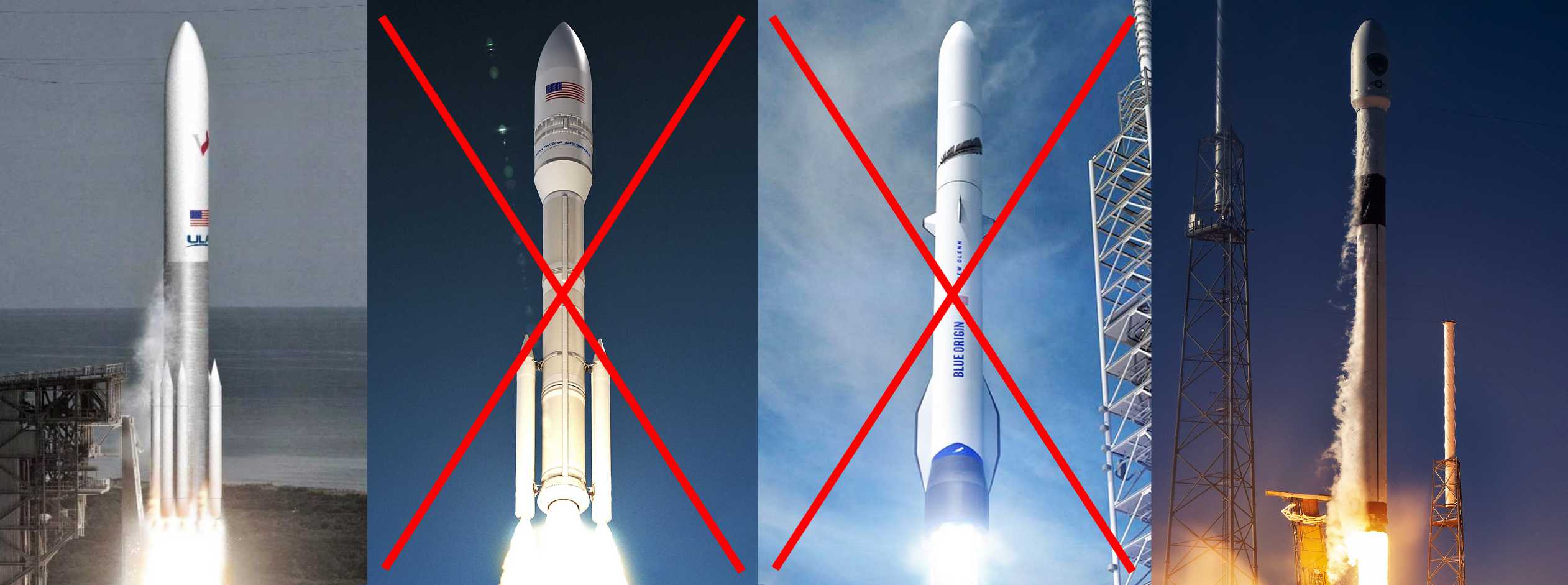
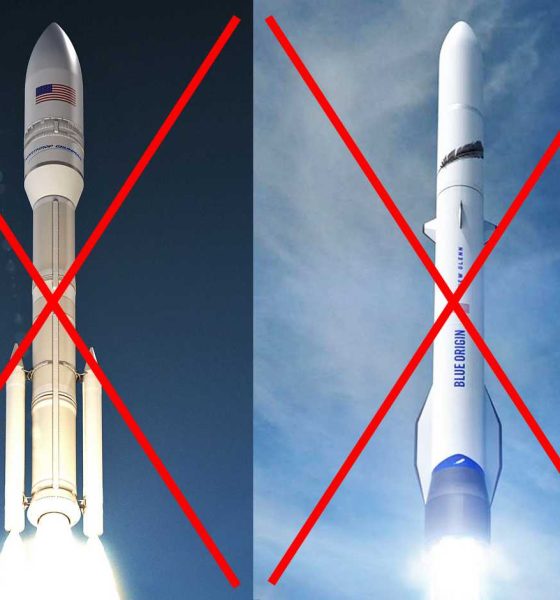
News
SpaceX, ULA win multibillion-dollar military launch contract years in the making
Ending a process that began almost two years ago, the US Air Force (now Space Force) has selected SpaceX and ULA to be the recipients of a multibillion-dollar series of launch contracts that stretch into the late 2020s.
Known as the National Security Space Launch Phase 2 Launch Services Acquisition (LSA), the US Air Force publicly began the initiative in Q4 2018. In May 2019, the LSA process was opened to bidders and the military ultimately received serious proposals from SpaceX, the United Launch Alliance (ULA), Northrop Grumman, and Blue Origin.
While the latter three companies proposed their respective next-generation rockets – still in development – to complete at least a dozen military launches from 2022 to 2027, SpaceX offered up Falcon 9 and Falcon Heavy. As of April 2020, Falcon 9 officially usurped ULA’s Atlas V rocket to become the United States’ most prolific operational rocket. While ULA has technically included Atlas V as a backup option in its NSSL Phase 2 bid, the company’s primary launch vehicle is Vulcan Centaur, scheduled to fly for the first time no earlier than July 2021.
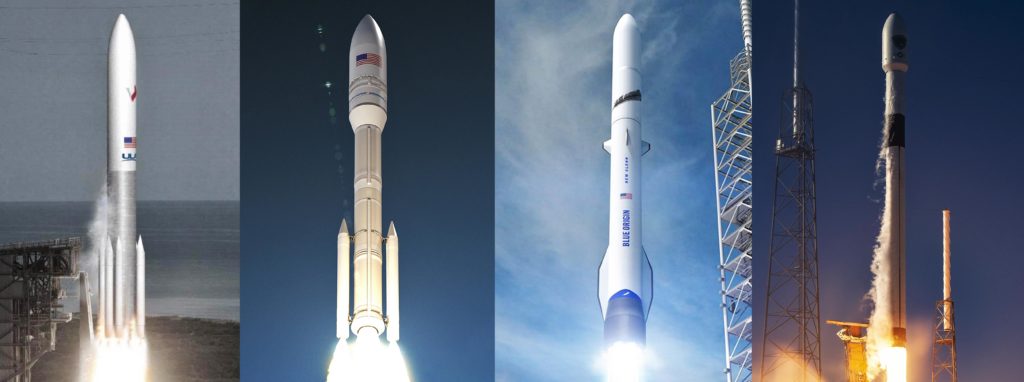
As a result, failing to award SpaceX at least one of the two NSSL LSA Phase 2 slots – split 60:40 – would have almost assuredly made a farce of the US military competition. The real question, then, was who would win the other award, and whether the US military would shock the industry with a final decision more technical than political. As previously discussed on Teslarati, the fact that four separate companies submitted serious bids for Phase 2 gave the US military a significant opportunity.
“For dubious reasons, the US Air Force (USAF) has structured the NSSL Phase 2 acquisition in such a way that – despite there being four possible competitors – only two will be awarded contracts at its conclusion. The roughly ~34 launch contracts up for grabs would be split 60:40 between the two victors, leaving two competitors completely empty handed.”
Teslarati.com — August 14th, 2019
Despite repeated petitions by Blue Origin and the attempted intervention of lawmakers in Congress, the US military remained ardently against awarding Phase 2 launch contracts to more than two providers throughout the competition. Barring a successful protest from snubbed bidders Northrop Grumman and/or Blue Origin, it appears that the military ultimately won the battle, selecting two providers.
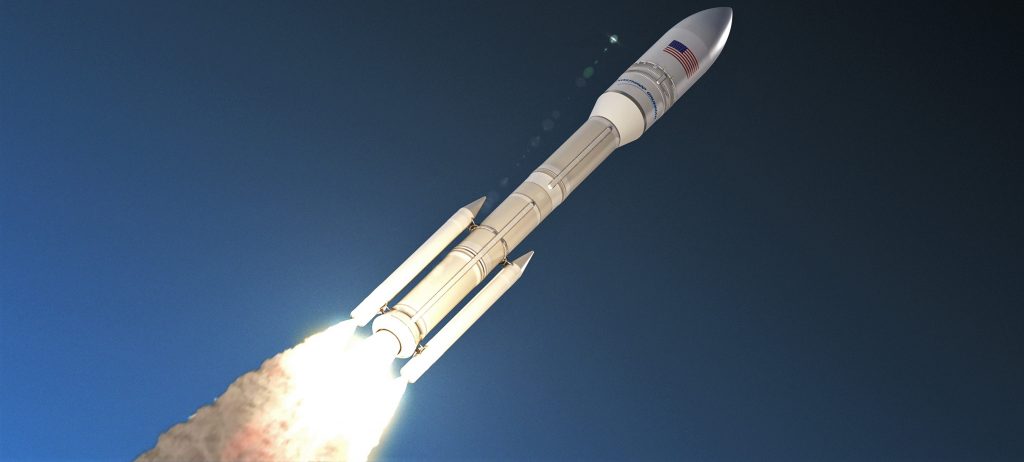

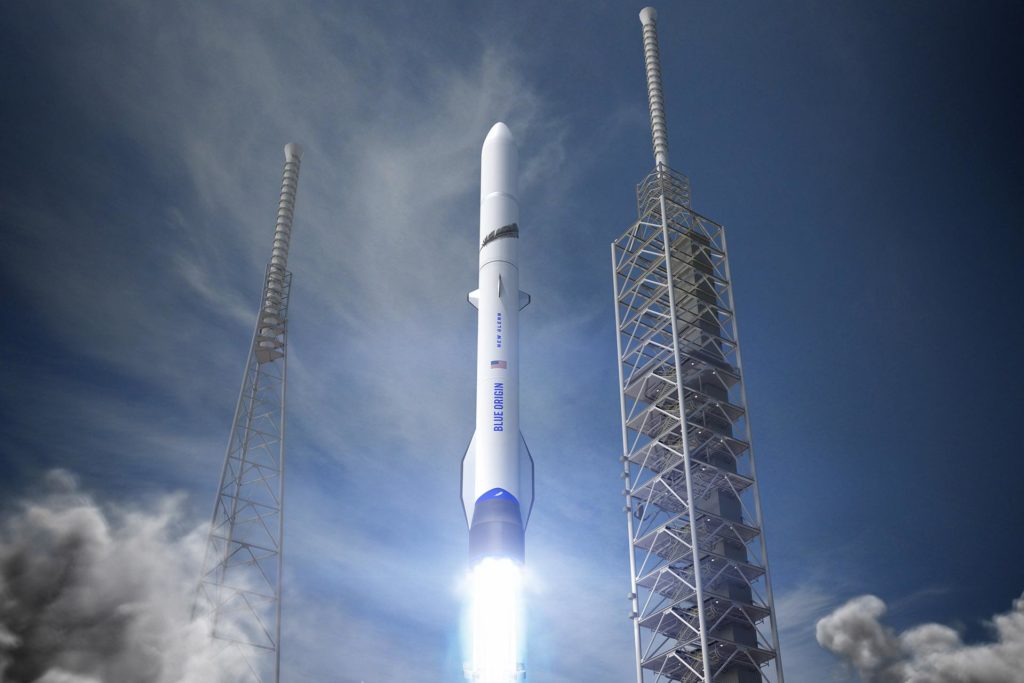
Instead of awarding even just a handful of the 34 launch contracts up for grabs to Northrop Grumman, the US Space Force is all but guaranteeing that the company’s Omega rocket will die in the cradle without an immediate slew of additional military contracts. There’s a chance that NSSL Phase 1 LSA funding will continue, likely giving NG the money it needs to complete Omega’s development, but that’s far from guaranteed.
Funded entirely out of Jeff Bezos’ pocket, Blue Origin’s ambitious New Glenn reusable rocket is more insulated from a lack of US military contracts and the company could also continue to receive several hundred million dollars as part of an LSA Phase 1 award. For Blue Origin, already set on entering New Glenn into the commercial launch market, military funding could ensure that the company does the extra work needed to certify the rocket and its production facilities for military launches.
Down the road, that means that the US Air Force, Space Force, or National Reconnaissance Office (NRO) could all feasibly award Blue Origin or Northrop Grumman launch contracts outside the 34 Phase 2 missions without having to start a development and certification process that can take a year or more from scratch.
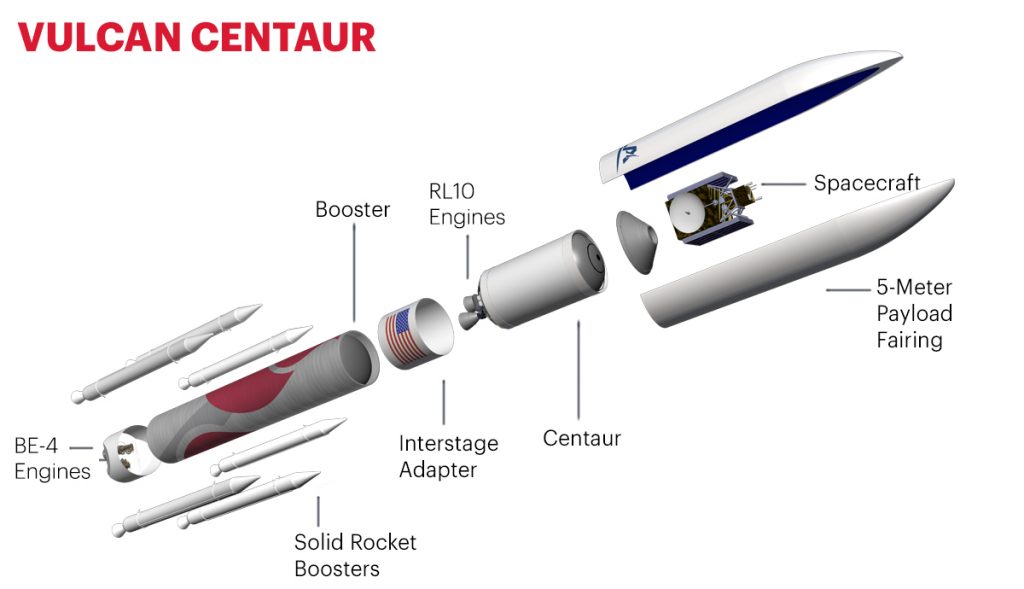
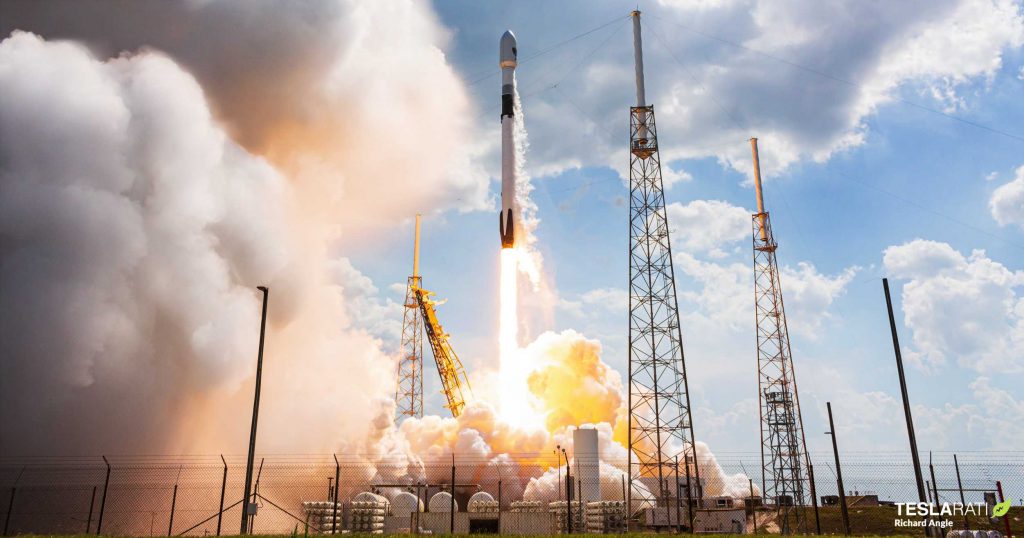
Regardless of the missed opportunities, the NSSL LSA Phase 2 contract is a major win for SpaceX and guarantees the company’s Falcon 9 and Falcon Heavy rockets some 13-14 military launch contracts over a five-year period. For ULA, the victory is likely a massive relief, given that the company’s next-generation (expendable) Vulcan Centaur rocket has next to no chance of sustaining itself with commercial launch contracts. Much like Atlas V in the last decade of the rocket’s life and Delta IV over most of its two-decade career, ULA’s Vulcan rocket will continue the trend of relying almost exclusively on US military contracts.
This time around, however, the US military’s preferential treatment of ULA is nakedly obvious. At almost every turn, SpaceX’s Falcon 9 and Falcon Heavy rockets can provide the same launch services as ULA for anywhere from 20-50% less. For the few missions (direct to geostationary) where ULA’s Atlas V, Delta IV, and Vulcan rockets might actually have a step up over SpaceX, the US could have easily awarded ULA the smaller 40% share or even split that 40% share with Blue Origin or Northrop Grumman, giving SpaceX the lion’s share and likely saving hundreds of millions of dollars – if not $1B+ – over the next seven years.
Instead, business (more or less) as usual will continue for at least another decade as the US military functionally subsidizes ULA’s existence by prioritizing a more expensive rocket to achieve the same outcome. The first LSA Phase 2 launches are currently scheduled to begin no earlier than (NET) 2022.
Check out Teslarati’s Marketplace! We offer Tesla accessories, including for the Tesla Cybertruck and Tesla Model 3.

News
Tesla aims to combat common Full Self-Driving problem with new patent
Tesla writes in the patent that its autonomous and semi-autonomous vehicles are heavily reliant on camera systems to navigate and interact with their environment.

Tesla is aiming to combat a common Full Self-Driving problem with a new patent.
One issue with Tesla’s vision-based approach is that sunlight glare can become a troublesome element of everyday travel. Full Self-Driving is certainly an amazing technology, but there are still things Tesla is aiming to figure out with its development.
Unfortunately, it is extremely difficult to get around this issue, and even humans need ways to combat it when they’re driving, as we commonly use sunglasses or sun visors to give us better visibility.
Cameras obviously do not have these ways to fight sunglare, but a new patent Tesla recently had published aims to fight this through a “glare shield.”
Tesla writes in the patent that its autonomous and semi-autonomous vehicles are heavily reliant on camera systems to navigate and interact with their environment.

The ability to see surroundings is crucial for accurate performance, and glare is one element of interference that has yet to be confronted.
Tesla described the patent, which will utilize “a textured surface composed of an array of micro-cones, or cone-shaped formations, which serve to scatter incident light in various directions, thereby reducing glare and improving camera vision.”

The patent was first spotted by Not a Tesla App.
The design of the micro-cones is the first element of the puzzle to fight the excess glare. The patent says they are “optimized in size, angle, and orientation to minimize Total Hemispherical Reflectance (THR) and reflection penalty, enhancing the camera’s ability to accurately interpret visual data.”
Additionally, there is an electromechanical system for dynamic orientation adjustment, which will allow the micro-cones to move based on the angle of external light sources.
This is not the only thing Tesla is mulling to resolve issues with sunlight glare, as it has also worked on two other ways to combat the problem. One thing the company has discussed is a direct photon count.
CEO Elon Musk said during the Q2 Earnings Call:
“We use an approach which is direct photon count. When you see a processed image, so the image that goes from the sort of photon counter — the silicon photon counter — that then goes through a digital signal processor or image signal processor, that’s normally what happens. And then the image that you see looks all washed out, because if you point the camera at the sun, the post-processing of the photon counting washes things out.”
Future Hardware iterations, like Hardware 5 and Hardware 6, could also integrate better solutions for the sunglare issue, such as neutral density filters or heated lenses, aiming to solve glare more effectively.
Elon Musk
Delaware Supreme Court reinstates Elon Musk’s 2018 Tesla CEO pay package
The unanimous decision criticized the prior total rescission as “improper and inequitable,” arguing that it left Musk uncompensated for six years of transformative leadership at Tesla.

The Delaware Supreme Court has overturned a lower court ruling, reinstating Elon Musk’s 2018 compensation package originally valued at $56 billion but now worth approximately $139 billion due to Tesla’s soaring stock price.
The unanimous decision criticized the prior total rescission as “improper and inequitable,” arguing that it left Musk uncompensated for six years of transformative leadership at Tesla. Musk quickly celebrated the outcome on X, stating that he felt “vindicated.” He also shared his gratitude to TSLA shareholders.
Delaware Supreme Court makes a decision
In a 49-page ruling Friday, the Delaware Supreme Court reversed Chancellor Kathaleen McCormick’s 2024 decision that voided the 2018 package over alleged board conflicts and inadequate shareholder disclosures. The high court acknowledged varying views on liability but agreed rescission was excessive, stating it “leaves Musk uncompensated for his time and efforts over a period of six years.”
The 2018 plan granted Musk options on about 304 million shares upon hitting aggressive milestones, all of which were achieved ahead of time. Shareholders overwhelmingly approved it initially in 2018 and ratified it once again in 2024 after the Delaware lower court struck it down. The case against Musk’s 2018 pay package was filed by plaintiff Richard Tornetta, who held just nine shares when the compensation plan was approved.
A hard-fought victory
As noted in a Reuters report, Tesla’s win avoids a potential $26 billion earnings hit from replacing the award at current prices. Tesla, now Texas-incorporated, had hedged with interim plans, including a November 2025 shareholder-approved package potentially worth $878 billion tied to Robotaxi and Optimus goals and other extremely aggressive operational milestones.
The saga surrounding Elon Musk’s 2018 pay package ultimately damaged Delaware’s corporate appeal, prompting a number of high-profile firms, such as Dropbox, Roblox, Trade Desk, and Coinbase, to follow Tesla’s exodus out of the state. What added more fuel to the issue was the fact that Tornetta’s legal team, following the lower court’s 2024 decision, demanded a fee request of more than $5.1 billion worth of TSLA stock, which was equal to an hourly rate of over $200,000.
Delaware Supreme Court Elon Musk 2018 Pay Package by Simon Alvarez
News
Tesla Cybercab tests are going on overdrive with production-ready units
Tesla is ramping its real-world tests of the Cybercab, with multiple sightings of the vehicle being reported across social media this week.

Tesla is ramping its real-world tests of the Cybercab, with multiple sightings of the autonomous two-seater being reported across social media this week. Based on videos of the vehicle that have been shared online, it appears that Cybercab tests are underway across multiple states.
Recent Cybercab sightings
Reports of Cybercab tests have ramped this week, with a vehicle that looked like a production-ready prototype being spotted at Apple’s Visitor Center in California. The vehicle in this sighting was interesting as it was equipped with a steering wheel. The vehicle also featured some changes to the design of its brake lights.
The Cybercab was also filmed testing at the Fremont factory’s test track, which also seemed to involve a vehicle that looked production-ready. This also seemed to be the case for a Cybercab that was spotted in Austin, Texas, which happened to be undergoing real-world tests. Overall, these sightings suggest that Cybercab testing is fully underway, and the vehicle is really moving towards production.
Production design all but finalized?
Recently, a near-production-ready Cybercab was showcased at Tesla’s Santana Row showroom in San Jose. The vehicle was equipped with frameless windows, dual windshield wipers, powered butterfly door struts, an extended front splitter, an updated lightbar, new wheel covers, and a license plate bracket. Interior updates include redesigned dash/door panels, refined seats with center cupholders, updated carpet, and what appeared to be improved legroom.
There seems to be a pretty good chance that the Cybercab’s design has been all but finalized, at least considering Elon Musk’s comments at the 2025 Annual Shareholder Meeting. During the event, Musk confirmed that the vehicle will enter production around April 2026, and its production targets will be quite ambitious.








